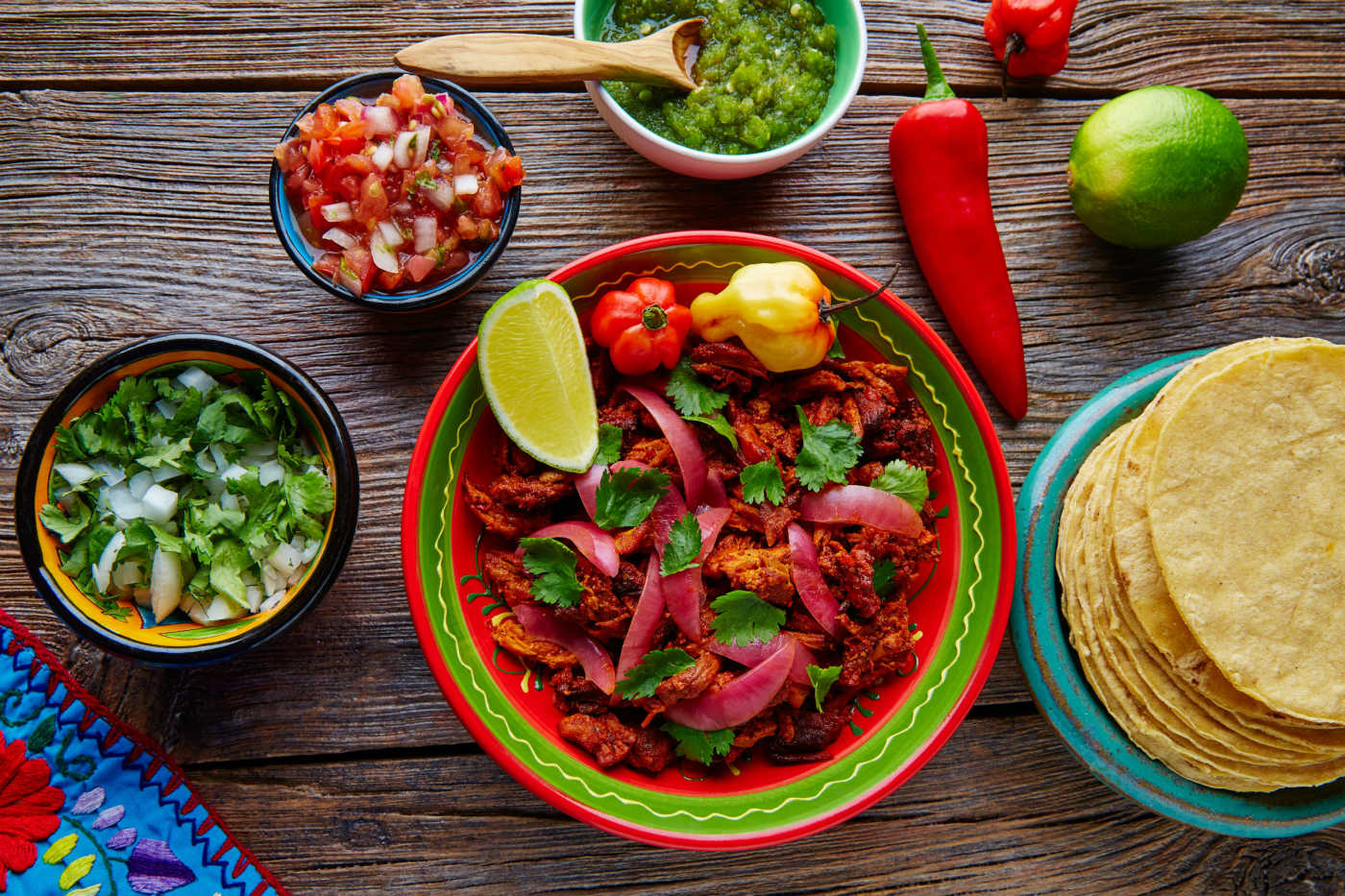If you’re a food lover with a taste for adventure, then get ready to embark on a culinary journey through Mexico’s vibrant and diverse regions. From the spicy and bold flavors of the Yucatan Peninsula to the savory delicacies of Oaxaca, this country is a true foodie paradise. Whether you’re craving street tacos, fresh seafood, or traditional mole, each region offers its own unique culinary treasures waiting to be discovered. So grab your appetite and get ready to explore the rich and flavorsome tapestry of Mexico’s culinary heritage. Mexico is a country that offers a vibrant and diverse culinary landscape, with each region showcasing its own unique flavors, ingredients, and traditional dishes. From the border town of Tijuana to the stunning beaches of the Yucatan Peninsula, from the colonial charm of Oaxaca to the bustling streets of Mexico City, there is no shortage of culinary delights to be discovered. In this article, we will take you on a journey through ten different regions of Mexico, highlighting the must-visit cities and the must-try dishes in each.
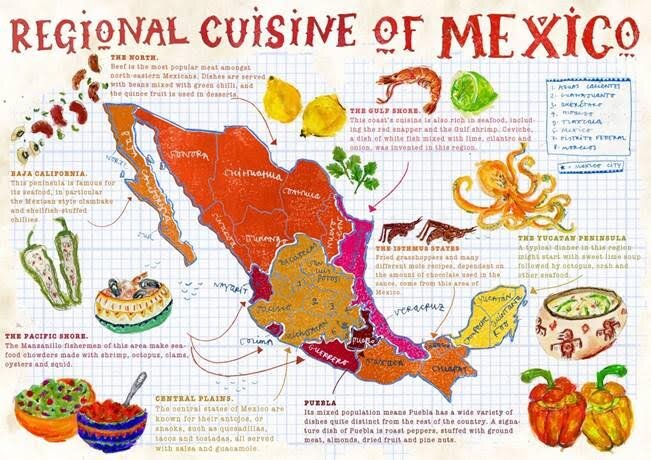
I. Baja California
A. Tijuana
Tijuana, located just south of the US-Mexico border, is a city that has earned a reputation for its vibrant street food scene and craft beer culture. One of the must-try dishes in Tijuana is the famous fish taco. These delicious tacos are made with a crispy beer-battered fish fillet, topped with shredded cabbage, creamy sauce, and a squeeze of lime. For beer enthusiasts, a visit to one of the many craft breweries in Tijuana is a must. You can enjoy a wide variety of locally brewed beers, from hoppy IPAs to smooth stouts, paired with mouthwatering snacks like ceviche or grilled carne asada.
B. Ensenada
Ensenada, located along the Baja California coastline, is known for its fresh seafood and wine production. A visit to Ensenada wouldn’t be complete without sampling the region’s famous fish ceviche. Made with locally caught fish, lime juice, onions, and cilantro, this refreshing dish is the perfect appetizer to start your culinary adventure in Ensenada. Another must-try in Ensenada is the seafood tostada, which features a crispy tortilla topped with marinated octopus, shrimp, or scallops, along with avocado, tomatoes, and a spicy salsa. To complement your meal, don’t forget to indulge in some of the excellent wines produced in the region, particularly the crisp and citrusy whites and fruity reds.
C. Mexicali
Situated in the northern part of Baja California, Mexicali is a city known for its fusion of Mexican and Chinese cuisine. One popular dish that exemplifies this unique blend of flavors is the Chinese-Mexican tacos. These tacos are made with a crispy shell filled with stir-fried beef, cabbage, and soy sauce, creating a harmonious combination of savory and crunchy textures. Another must-try in Mexicali is the famous street food snack known as the “Cachanilla hot dog.” This delicious hot dog is topped with a variety of ingredients, including bacon, grilled onions, mayonnaise, ketchup, and mustard, all served in a soft bun. Mexicali’s culinary offerings truly showcase the cultural diversity of the region.
II. Yucatan Peninsula
A. Merida
Merida, the capital of the Yucatan Peninsula, is a city known for its rich Mayan heritage and delicious Yucatecan cuisine. One of the most iconic dishes from this region is cochinita pibil. Made with tender chunks of pork marinated in achiote paste and sour orange juice, then slow-cooked in banana leaves, cochinita pibil is a true Yucatecan delicacy. Another must-try in Merida is the traditional Yucatecan tamale, known as a “pib.” These tamales are made with corn masa dough filled with a variety of ingredients such as chicken, pork, or vegetables, then wrapped in banana leaves and steamed to perfection.
B. Playa del Carmen
Playa del Carmen, a popular tourist destination on the Riviera Maya, offers a wide range of culinary experiences for visitors. One dish you shouldn’t miss is the famous seafood dish called “tikin-xic.” This traditional Mayan recipe features a fillet of fish (usually red snapper or grouper) marinated in achiote paste and sour orange juice, then grilled to perfection. Another popular dish in Playa del Carmen is the “coctel de camarones,” a refreshing shrimp cocktail made with fresh shrimp, tomatoes, onions, cilantro, avocado, lime juice, and a spicy tomato sauce. These flavorful dishes are a true reflection of the coastal influence on Yucatecan cuisine.
C. Tulum
Tulum, known for its stunning beaches and ancient Mayan ruins, also offers a unique culinary experience. One dish that stands out is the “pescado a la talla,” a whole grilled fish marinated with a spicy adobo sauce made with achiote paste, garlic, and lime juice. It is typically served with rice, beans, and warm tortillas. Another must-try in Tulum is the traditional Mayan dish called “sikil pak.” This creamy dip is made with roasted pumpkin seeds, tomatoes, onions, garlic, and cilantro, and is commonly served with crispy tortilla chips. Tulum’s culinary scene reflects the fusion of ancient Mayan flavors with modern techniques, creating a truly memorable dining experience.
III. Oaxaca
A. Oaxaca City
Oaxaca City, the culinary capital of Mexico, is a UNESCO World Heritage site that offers a wealth of traditional dishes and ingredients. One of the most iconic dishes from this region is mole negro, a complex sauce made with chocolate, various types of chilies, and a blend of spices. It is usually served over chicken or turkey and is accompanied by rice and warm tortillas. Another must-try in Oaxaca City is tlayudas, a large crispy tortilla topped with refried beans, cheese, avocado, and your choice of meat or vegetables. Oaxaca City’s culinary scene is a true reflection of the region’s rich gastronomic heritage.
B. Sierra Norte
The Sierra Norte region of Oaxaca is known for its stunning mountain landscapes and its traditional cuisine. One dish that represents the flavors of the Sierra Norte is tasajo, which is thinly sliced, marinated beef that is grilled or pan-fried and usually served with fresh tortillas, salsa, and avocado. Another must-try in this region is the delicious beverage known as tejate. Made from roasted maize, cacao beans, cinnamon, and the roasted seeds of the mamey fruit, tejate is a refreshing and flavorful drink that has been enjoyed by the indigenous Zapotec people for centuries. A visit to the Sierra Norte is an opportunity to immerse yourself in Oaxaca’s cultural and culinary traditions.
C. Puerto Escondido
Located on the Pacific coast of Oaxaca, Puerto Escondido is a popular beach destination that also offers a range of delicious seafood dishes. One dish you must try in Puerto Escondido is the “pescado zarandeado.” This dish consists of a whole fish (often red snapper) split open and marinated with a blend of spices, garlic, and lime juice, then grilled until the skin becomes crispy and the flesh is tender. Another popular seafood dish in Puerto Escondido is the “pulpo a la diabla,” which features octopus cooked in a spicy red sauce and served with rice and warm tortillas. Puerto Escondido’s coastal location ensures that fresh and flavorful seafood is always on the menu.
IV. Mexico City
A. Centro Historico
Mexico City, the bustling capital of Mexico, is a melting pot of culinary traditions from all over the country. In the historic center of the city, you will find a wide range of dining options, from street food stalls to upscale restaurants. One dish that is synonymous with Mexico City is the “tacos al pastor.” These tacos are made with marinated pork that is cooked on a vertical spit, similar to a shawarma, and then served with pineapple, cilantro, and onions. Another must-try in the Centro Historico is the iconic street food snack called “chiles en nogada.” This dish consists of roasted poblano peppers filled with a mixture of ground meat, fruits, and spices, topped with a creamy walnut sauce and garnished with pomegranate seeds. Exploring the Centro Historico of Mexico City is a sensory adventure that will leave you craving for more.
B. Roma Norte
Roma Norte, a trendy neighborhood in Mexico City, offers a wide range of culinary experiences for visitors. One dish you shouldn’t miss is the “mole poblano.” This rich and complex sauce is made with a blend of chilies, chocolate, nuts, seeds, and spices. It is typically served over roasted chicken or turkey, accompanied by rice and warm tortillas. Another popular dish in Roma Norte is the “tacos de canasta.” These soft tortillas filled with various fillings such as beans, potatoes, or spicy meats are traditionally steamed and then served in baskets. Roma Norte’s vibrant culinary scene is a testament to the creativity and innovation of Mexico City’s chefs.
C. Coyoacan
Coyoacan, a charming neighborhood in the southern part of Mexico City, is known for its bohemian atmosphere and its traditional food markets. One must-visit destination in Coyoacan is the famous “Mercado de Coyoacan,” where you can sample a variety of Mexican street food delicacies. One dish you must try is the “tamales de elote.” These tamales are made with sweet corn masa dough filled with a mixture of cheese, sugar, and cinnamon, then wrapped in corn husks and steamed. Another popular dish in Coyoacan is “mole de caderas,” a hearty stew made with lamb meat, chilies, and spices. Coyoacan’s traditional markets offer a glimpse into the everyday culinary traditions of Mexico City’s residents.
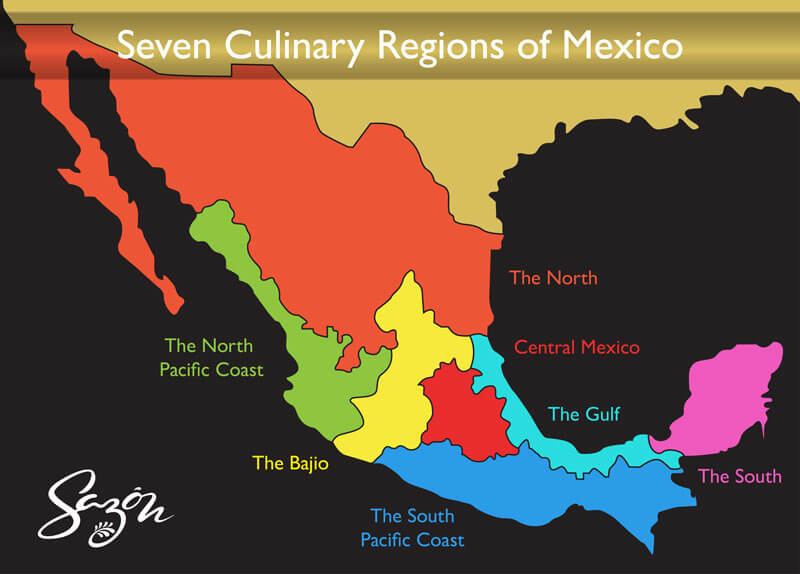
V. Puebla
A. Puebla City
Puebla City, located southeast of Mexico City, is renowned for its flavorful cuisine and traditional dishes. One of the most iconic dishes from this region is “mole poblano.” This thick and rich sauce is made with a combination of chilies, chocolate, spices, nuts, and seeds, resulting in a complex and savory flavor. Mole poblano is usually served over roasted turkey or chicken, accompanied by rice and warm tortillas. Another must-try in Puebla City is “chiles en nogada.” This dish features roasted poblano peppers stuffed with a mixture of ground meat, fruits, and spices, topped with a creamy walnut sauce and garnished with pomegranate seeds. Puebla City’s culinary heritage is a testament to the fusion of indigenous and Spanish influences.
B. Cholula
Cholula, located just outside of Puebla City, is known for its stunning archaeological site and its famous “nacho volcano.” This ancient city also offers a variety of delicious local dishes. One dish you must try in Cholula is “chiles en nogada.” Similar to the version in Puebla City, this dish features roasted poblano peppers stuffed with a mixture of ground meat, fruits, and spices, topped with a creamy walnut sauce and garnished with pomegranate seeds. Another popular dish in Cholula is “cemitas poblanas,” a type of sandwich made with a sesame seed bun filled with various meats, Oaxaca cheese, avocado, and chipotle sauce. Cholula’s culinary offerings are a reflection of the region’s rich history and cultural heritage.
C. Atlixco
Atlixco, located southeast of Puebla City, is a charming town known for its agricultural traditions and its vibrant culinary scene. One dish you must try in Atlixco is “mole de caderas.” This hearty stew is made with lamb meat, chiles, and spices, creating a savory and flavorful dish. Another must-try in Atlixco is “cecina,” a thinly sliced and marinated beef or pork that is typically grilled or pan-fried and served with fresh tortillas, salsa, and avocado. Atlixco’s culinary traditions are deeply rooted in the region’s agricultural heritage, resulting in dishes that highlight the richness of the local ingredients.
VI. Veracruz
A. Veracruz City
Veracruz City, located along the Gulf of Mexico, offers a unique blend of African, Spanish, and indigenous culinary traditions. One dish you must try in Veracruz City is “pescado a la veracruzana.” This iconic dish features fish (usually red snapper) cooked in a flavorful tomato sauce with onions, capers, olives, and herbs, resulting in a tangy and savory flavor. Another popular dish in Veracruz City is “jaiba suave,” a creamy and delicious crab soup made with fresh crab meat, milk, tomatoes, and spices. Veracruz City’s coastal location ensures that fresh seafood is always on the menu, and its historic influences add depth and complexity to its culinary offerings.
B. Xalapa
Xalapa, the capital of the state of Veracruz, is known for its vibrant music and arts scene as well as its delicious cuisine. One dish you shouldn’t miss in Xalapa is “enchiladas xalapeñas.” These tortillas are filled with a roasted tomato and chile sauce, topped with cheese, onions, and sour cream, and served with a side of refried beans. Another must-try in Xalapa is “salsa molcajeteada,” a traditional salsa made with roasted tomatoes, chilies, onions, and herbs, all ground together in a molcajete (a traditional Mexican mortar and pestle). Xalapa’s eclectic and colorful culinary scene is a reflection of the region’s artistic and cultural heritage.
C. Boca del Rio
Boca del Rio, a beachfront city in Veracruz, offers a wide range of seafood dishes for visitors to enjoy. One dish you must try in Boca del Rio is “pulpo a la veracruzana.” This octopus dish is cooked in a tangy tomato sauce with onions, capers, olives, and spices, resulting in a rich and flavorful taste. Another popular seafood dish in Boca del Rio is “arroz a la tumbada,” a flavorful rice dish made with a variety of seafood such as shrimp, octopus, clams, and fish, cooked with tomatoes, onions, and spices. Boca del Rio’s coastal location ensures that fresh seafood is always the star of the show.
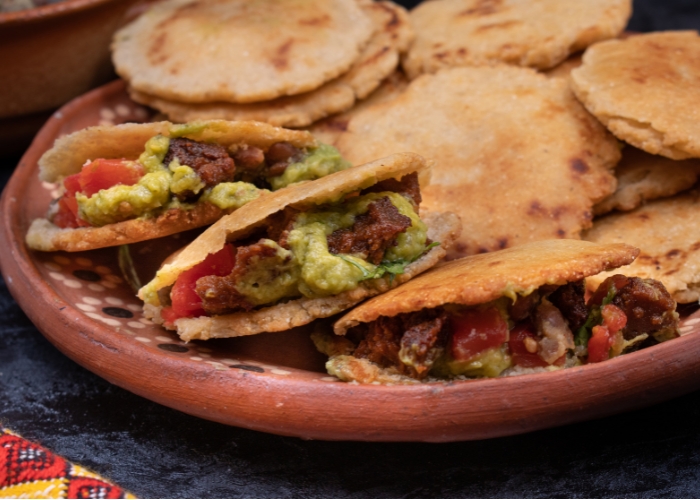
VII. Michoacan
A. Morelia
Morelia, the capital of Michoacan, is a city known for its colonial architecture and its rich culinary traditions. One dish you must try in Morelia is “carnitas.” These succulent and flavorful pork confit are typically served with warm tortillas, salsa, onion, and cilantro, creating a perfect combination of textures and flavors. Another must-try in Morelia is “corundas.” Similar to tamales, corundas are made with a mixture of fresh corn masa dough, filled with various ingredients such as cheese, rajas, or meat, wrapped in corn husks, and then steamed. Morelia’s culinary scene is a testament to the region’s agricultural abundance and its commitment to preserving its culinary heritage.
B. Patzcuaro
Patzcuaro, a picturesque town in Michoacan, offers a range of traditional dishes that reflect the region’s indigenous heritage. One dish you must try in Patzcuaro is “sopa tarasca,” a hearty soup made with black beans, tomatoes, onions, tortilla strips, and queso fresco, garnished with avocado and a drizzle of cream. Another must-try in Patzcuaro is “gua bán,” a traditional drink made with fermented corn dough, chocolate, and spices. It is typically served hot and is a popular beverage during festive celebrations. Patzcuaro’s culinary traditions are deeply rooted in the region’s indigenous culture, resulting in dishes that are both comforting and flavorful.
C. Uruapan
Uruapan, known as the “avocado capital of the world,” offers a taste of Michoacan’s agricultural bounty. One dish you must try in Uruapan is “atole de aguacate,” a warm and creamy beverage made with ripe avocados, milk, sugar, and a touch of cinnamon. Another popular dish in Uruapan is “carnitas estilo Uruapan.” These juicy and flavorful pork confit are traditionally cooked in large copper pots until they are tender and crispy, resulting in melt-in-your-mouth goodness. Uruapan’s unique culinary offerings highlight the region’s agricultural heritage and its love for avocados.
VIII. Bajio
A. Guanajuato City
Guanajuato City, a UNESCO World Heritage site, is known for its colorful colonial architecture and its delicious cuisine. One dish you must try in Guanajuato City is “enchiladas mineras.” These enchiladas are made with a traditional red chili sauce, filled with cheese, and topped with onions and sour cream. Another must-try in Guanajuato City is “chiles en nogada.” This iconic dish features roasted poblano peppers stuffed with a mixture of ground meat, fruits, and spices, topped with a creamy walnut sauce and garnished with pomegranate seeds. Guanajuato City’s culinary traditions reflect the region’s rich history and cultural heritage.
B. San Miguel de Allende
San Miguel de Allende, a charming town in Guanajuato, offers a range of culinary delights for visitors to savor. One dish you must try in San Miguel de Allende is “pollo en mole.” This dish features tender chicken cooked in a rich and complex mole sauce made with a blend of chilies, chocolate, nuts, seeds, and spices. Another popular dish in San Miguel de Allende is “tacos de carnitas.” These crispy and flavorful pork tacos are typically topped with salsa, onions, and cilantro, creating a perfect balance of textures and flavors. San Miguel de Allende’s culinary scene blends traditional flavors with modern techniques, resulting in a dining experience that is both familiar and innovative.
C. Queretaro
Queretaro, a vibrant city in the Bajio region, offers a range of traditional dishes that highlight the region’s agricultural heritage. One dish you must try in Queretaro is “quesadillas queretanas.” These quesadillas are made with a blue corn masa dough and filled with cheese, squash blossoms, mushrooms, or other seasonal ingredients, then cooked on a griddle until crispy and golden. Another must-try in Queretaro is “gorditas.” These thick and hearty corn masa pockets are filled with various fillings such as cheese, meat, or beans, then topped with salsa, lettuce, and cheese. Queretaro’s culinary traditions celebrate the region’s local ingredients and its commitment to preserving its cultural heritage.
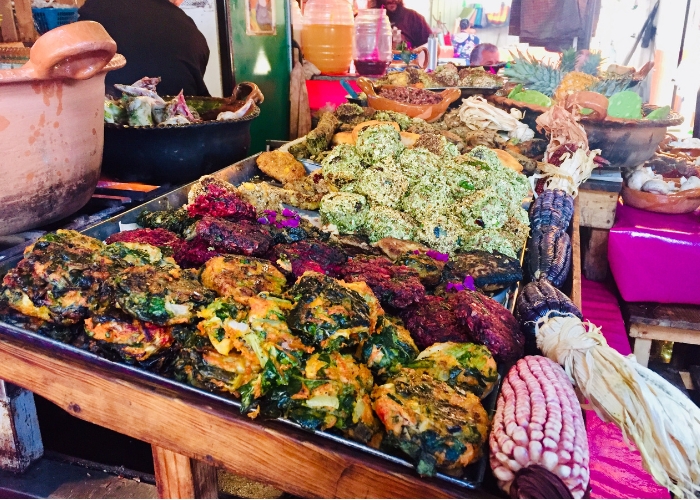
IX. Jalisco
A. Guadalajara
Guadalajara, the capital of Jalisco, is known for its rich cultural heritage and its vibrant culinary scene. One dish you must try in Guadalajara is “birria.” This iconic dish features tender and flavorful meat (often goat or beef) that is slow-cooked with a blend of chilies, spices, and herbs, resulting in a rich and savory flavor. Birria is typically served with warm tortillas, onions, cilantro, and a spicy salsa. Another must-try in Guadalajara is “torta ahogada,” a popular street food snack. This sandwich is made with a crusty roll filled with carnitas, then dipped in a spicy tomato sauce until it becomes soaked, hence the name “ahogada,” which means “drowned.” Guadalajara’s culinary scene is a reflection of the region’s vibrant culture and its love for flavor-packed dishes.
B. Tequila
Tequila, a town located in the heart of the Jalisco Highlands, is known for its production of Mexico’s iconic spirit. While exploring the town’s tequila distilleries, you can also indulge in a variety of traditional dishes. One dish you must try in Tequila is “carne en su jugo.” This hearty soup features thinly sliced beef cooked in its own juices, flavored with onions, bacon, and beans, resulting in a rich and comforting meal. Another popular dish in Tequila is “birria de res,” a beef stew that is slow-cooked until the meat is tender and flavorful. Tequila’s culinary offerings celebrate the region’s agricultural traditions and its love for hearty and comforting dishes.
C. Puerto Vallarta
Puerto Vallarta, a popular beach destination on Mexico’s Pacific coast, also offers a vibrant and diverse culinary scene. One dish you must try in Puerto Vallarta is “pescado zarandeado.” This grilled fish dish is marinated in a blend of spices, garlic, and lime juice, then cooked over an open flame until the skin becomes crispy and the flesh is tender. Another must-try in Puerto Vallarta is “camarones a la diabla.” This dish features shrimp cooked in a spicy red sauce, with onions, garlic, and tomatoes, resulting in a fiery and flavorful taste. Puerto Vallarta’s coastal location ensures that fresh seafood is always on the menu, and its culinary scene reflects the region’s vibrant and tropical atmosphere.
X. Chiapas
A. San Cristobal de las Casas
San Cristobal de las Casas, located in the highlands of Chiapas, offers a variety of traditional dishes that showcase the region’s indigenous heritage. One dish you must try in San Cristobal de las Casas is “tamales chiapanecos.” These tamales are made with a corn masa dough filled with chicken or pork, wrapped in banana leaves, and steamed until cooked through. Another must-try in San Cristobal de las Casas is “pox,” a traditional Mayan alcoholic beverage made from fermented corn or sugarcane, flavored with various herbs and spices. San Cristobal de las Casas’ culinary traditions celebrate the region’s vibrant indigenous culture and its commitment to preserving its culinary heritage.
B. Palenque
Palenque, known for its ancient Mayan ruins, also offers a range of traditional dishes for visitors to enjoy. One dish you must try in Palenque is “cocoyol en escabeche.” These pickled palm fruits are cooked in a tangy vinegar-based sauce with onions, garlic, and spices, resulting in a unique and flavorful appetizer. Another must-try in Palenque is “tascalate,” a traditional Mayan drink made with roasted corn, cocoa, cinnamon, and sugar, often served hot. Palenque’s culinary offerings reflect the region’s indigenous heritage and its commitment to preserving its cultural traditions.
C. Tuxtla Gutierrez
Tuxtla Gutierrez, the capital of Chiapas, offers a range of traditional dishes that highlight the region’s unique flavors. One dish you must try in Tuxtla Gutierrez is “cochito.” This tender and flavorful roast pork is typically marinated with a blend of spices and cooked until the meat is tender and juicy. Another must-try in Tuxtla Gutierrez is “pozol,” a traditional corn-based beverage made with fermented corn dough, and typically served cold. Tuxtla Gutierrez’s culinary scene celebrates the region’s agricultural traditions and its love for bold and savory flavors.
Mexico is a mesmerizing blend of rich heritage, vibrant culture, and diverse landscapes. Each region offers its own unique culinary traditions, reflecting the local flavors and ingredients that define their identity. From the vibrant street food scene in Tijuana to the rich, complex mole sauces of Oaxaca, from the fresh seafood of Veracruz to the hearty stews of Michoacan, there is something to satisfy every food lover’s palate in Mexico. So, pack your bags, embark on a culinary adventure, and experience the vibrant flavors and diverse cuisines that Mexico has to offer. Bon appétit!

